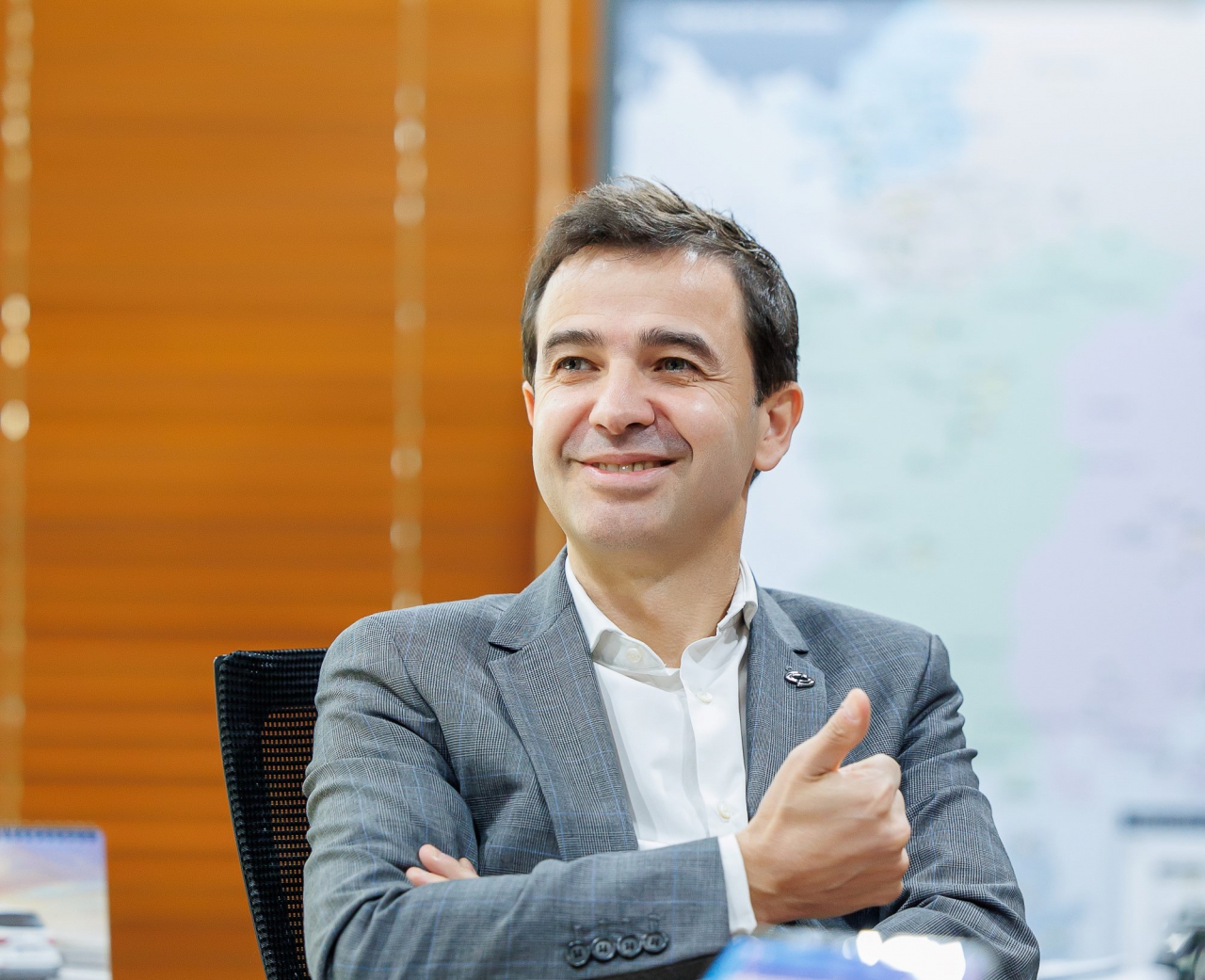Market Now
[Herald Interview] Renault Korea prepares for major changes from 2024
 |
Renault Korea Motors CEO Stephane Deblaise speaks during an interview with The Korea Herald at his office in Seoul on Dec. 5. (Renault Korea Motors) |
Renault Korea Motors is pinning high hopes for next year to be the beginning of a complete turnaround after years of struggle, as the French automaker has big plans for 2024 and beyond, its CEO says.
“Next year, we will have two big events. One related to the brand uplift and one related to the launch of the Aurora 1,” said Renault Korea Motors CEO Stephane Deblaise in an interview with The Korea Herald at the automaker’s office in Seoul on Dec. 5.
The Aurora 1, codenamed AR1, refers to the automaker’s project for developing and launching a new hybrid vehicle, which runs on an electric motor along with a gasoline engine. The Aurora project is Renault Korea’s roadmap to roll out hybrid vehicles from next year and battery-electric vehicles in 2026.
“With the Aurora project, we really put a French design, which will be done by Gilles Vidal, the head of Renault brand design,” said Deblaise.
“We put all our brand DNA and put together a car, which is much bigger than (it was) in the past. For instance, the knee room, which means the distance between your knee and the front row. In Korea, bigger is better as of today. Our intention is to really put the best of Renault and the needs of the Korean customer together in our new launches in the future.”
The CEO, who took the leading position at Renault Korea in March 2022, explained that the current plan is in two steps. The first phase is the brand uplift and launch of the Aurora projects between 2024 and 2026, and the second is to introduce new Renault Group brands and release more battery electric vehicles in the Korean market between 2027 and 2029.
As for the consensus among major global automakers to move toward all-electric vehicles soon, the CEO pointed out that hybrids will still be a huge part of the auto market even with the EV-shifting efforts in full steam.
"The common forecast of everybody is that 30 percent of the market in 2030 should be BEVs, meaning that 70 percent is more or less hybrid and maybe four by four,” he said.
Asked about specific plans for the brand uplift, Deblaise refrained from disclosing too much information. However, he underlined that now is the time to move forward and shake things up completely.
“Renault Samsung had a good image thanks to Samsung. This is why it was very good to capitalize on this Samsung heritage,” he said.
“We had good cars like the SM5, QM6 and QM3. Some of them were successful, but globally as time passed the company image was decreasing, seen as an old-fashioned brand more and more.”
The CEO pointed out that the recent cooperation announcement with Swedish BEV maker Polestar to produce the Polestar 4 at Renault Korea’s Busan plant from 2025 shows how the Korean office of the French brand can offer a lot more than what other importers can do here.
“Other brands are importing, but we are the only one to have a plant here,” he said.
“We are adding value to this country. For instance, nobody else could produce Polestar. We are creating something that nobody else can do.”
Deblaise also noted that having Zhejiang Geely Holding Group as a shareholder is a very good opportunity, because it’s open to a lot of brands such as Geely, Polestar, Volvo, Zeekr, Geometry, Lotus and Lynk & Co., in which the China-based multinational automotive company owns a majority stake.
“Some of these brands are very, very good. These brands have not so many plants outside of China,” he said.
“(Our cooperation with Polestar) is showing that what we call a horizontal partnership can be very good, meaning you don’t need to have all your competencies all at home to do the job.”
According to the CEO, the Busan plant’s production capacity is likely to stay at the current level of 300,000 units per year, but its portfolio will have more variety, with "several" brands using the site to produce vehicles in the future.
By Kan Hyeong-woo (hwkan@heraldcorp.com), Byun Hye-jin (hyejin2@heraldcorp.com)





![[Exclusive] Hyundai Mobis eyes closer ties with BYD](http://res.heraldm.com/phpwas/restmb_idxmake.php?idx=151&simg=/content/image/2024/11/25/20241125050044_0.jpg)


